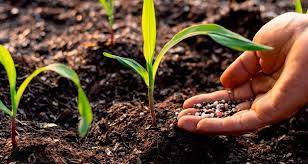5 Animals That Contribute to Soil Fertility
Soil fertility is a crucial aspect of agricultural productivity, supporting plant growth and healthy ecosystems. While plants and microbes are often highlighted for their role in enriching the soil, animals also play an essential part in maintaining soil health and fertility. From earthworms to larger mammals, various animals contribute to soil structure, nutrient cycling, and the overall health of the soil ecosystem. Here are five animals that significantly contribute to soil fertility:
1. Earthworms
Earthworms are perhaps the most famous soil enhancers. These creatures burrow deep into the soil, creating channels that improve soil aeration and drainage. As they tunnel, earthworms mix organic matter from the surface into the deeper layers of the soil, helping to break it down into nutrients that plants can absorb. Their digestive systems are designed to process organic matter, which they convert into nutrient-rich castings (worm manure) that are rich in nitrogen, phosphorus, and potassium — essential elements for plant growth. Earthworms also help to increase soil porosity, improving water infiltration and root penetration, which is vital for plant health.
2. Ants
Ants play a significant role in soil aeration and the decomposition process. As ants dig their tunnels, they create networks that allow air and water to reach plant roots more easily. This activity improves soil structure, making it looser and more porous. Additionally, ants are scavengers and help break down organic matter, such as dead insects and plant material. Their waste, rich in nitrogen and other nutrients, is deposited back into the soil, enriching it and supporting plant growth. Some species of ants also cultivate fungi, which help break down organic matter and contribute to nutrient cycling in the soil.
3. Termites
Termites, often misunderstood as pests, are actually vital contributors to soil fertility. These insects feed primarily on dead plant material, such as wood, and help break it down into smaller, more digestible parts. By doing so, they accelerate the decomposition process, releasing important nutrients like carbon, nitrogen, and phosphorus into the soil. Termite activity also creates channels that improve soil aeration and water infiltration. In tropical and subtropical ecosystems, where plant matter accumulates rapidly, termites play a crucial role in preventing nutrient buildup and maintaining a healthy soil balance.
4. Beetles
Beetles, especially dung beetles, are important players in the recycling of organic matter. Dung beetles feed on animal droppings, breaking them down and returning essential nutrients to the soil. Their actions also improve soil structure by creating channels for air and water to move through the earth. Other types of beetles, such as predatory species, help control pest populations and indirectly support plant health. By contributing to both the decomposition process and pest control, beetles help maintain a balanced, fertile soil ecosystem.
5. Bats
Bats may seem an unlikely contributor to soil fertility, but they play a crucial role, particularly in tropical ecosystems. Many bat species feed on insects, including agricultural pests, reducing the need for chemical pesticides. Their guano (feces) is a highly valuable natural fertilizer, rich in nitrogen, phosphorus, and potassium. When bats roost in caves or trees, their guano accumulates on the ground, enriching the soil and promoting plant growth. Bats, therefore, provide a natural source of fertilizer that supports soil fertility while helping control insect populations that could otherwise damage crops.
Conclusion
Animals play an often-overlooked but vital role in maintaining and enhancing soil fertility. From the deep burrowing of earthworms to the nutrient recycling of dung beetles and bats, these creatures contribute to soil health by improving structure, aeration, and nutrient cycling. As we continue to explore sustainable farming and environmental practices, understanding and supporting the contributions of animals to soil fertility will be essential for building resilient ecosystems and maintaining agricultural productivity.


